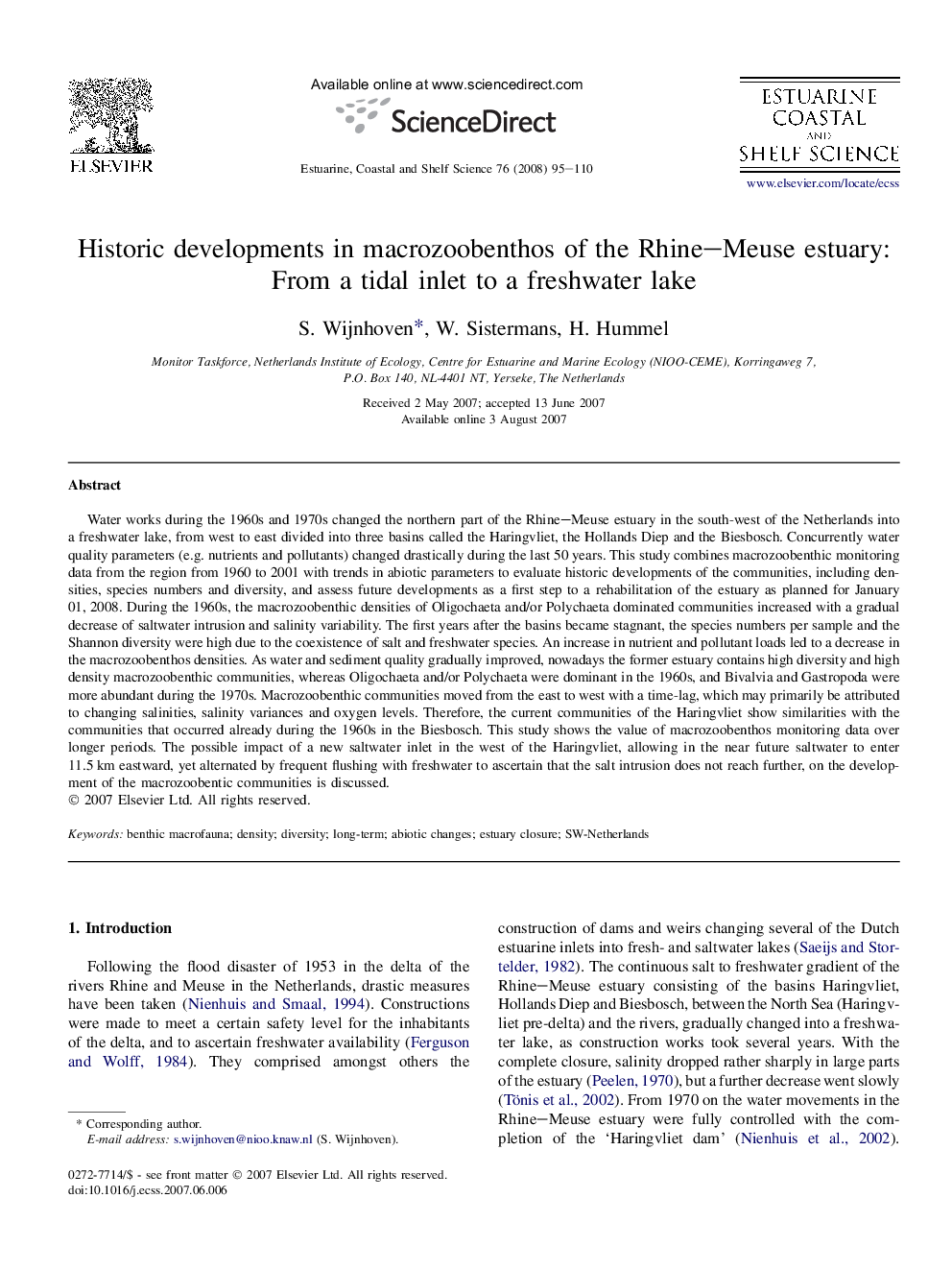| کد مقاله | کد نشریه | سال انتشار | مقاله انگلیسی | نسخه تمام متن |
|---|---|---|---|---|
| 4542269 | 1326759 | 2008 | 16 صفحه PDF | دانلود رایگان |

Water works during the 1960s and 1970s changed the northern part of the Rhine–Meuse estuary in the south-west of the Netherlands into a freshwater lake, from west to east divided into three basins called the Haringvliet, the Hollands Diep and the Biesbosch. Concurrently water quality parameters (e.g. nutrients and pollutants) changed drastically during the last 50 years. This study combines macrozoobenthic monitoring data from the region from 1960 to 2001 with trends in abiotic parameters to evaluate historic developments of the communities, including densities, species numbers and diversity, and assess future developments as a first step to a rehabilitation of the estuary as planned for January 01, 2008. During the 1960s, the macrozoobenthic densities of Oligochaeta and/or Polychaeta dominated communities increased with a gradual decrease of saltwater intrusion and salinity variability. The first years after the basins became stagnant, the species numbers per sample and the Shannon diversity were high due to the coexistence of salt and freshwater species. An increase in nutrient and pollutant loads led to a decrease in the macrozoobenthos densities. As water and sediment quality gradually improved, nowadays the former estuary contains high diversity and high density macrozoobenthic communities, whereas Oligochaeta and/or Polychaeta were dominant in the 1960s, and Bivalvia and Gastropoda were more abundant during the 1970s. Macrozoobenthic communities moved from the east to west with a time-lag, which may primarily be attributed to changing salinities, salinity variances and oxygen levels. Therefore, the current communities of the Haringvliet show similarities with the communities that occurred already during the 1960s in the Biesbosch. This study shows the value of macrozoobenthos monitoring data over longer periods. The possible impact of a new saltwater inlet in the west of the Haringvliet, allowing in the near future saltwater to enter 11.5 km eastward, yet alternated by frequent flushing with freshwater to ascertain that the salt intrusion does not reach further, on the development of the macrozoobentic communities is discussed.
Journal: Estuarine, Coastal and Shelf Science - Volume 76, Issue 1, 1 January 2008, Pages 95–110